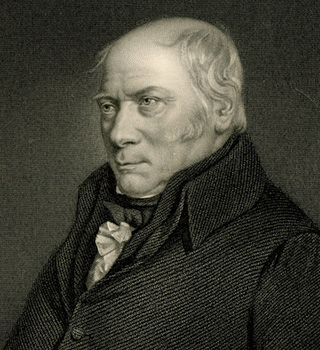Early Life and Education
Introduction to William Smith
William Smith, often revered as the “Father of English Geology,” played a pivotal role in shaping the field of geology. His groundbreaking work, particularly the creation of the first geological map, has left an indelible mark on the scientific community. Smith’s discoveries laid the groundwork for understanding the Earth’s strata and the fossils within them, making him one of the most influential figures in the history of geology.
Background and Early Life
William Smith was born on March 23, 1769, in the small village of Churchill in Oxfordshire, England. He came from a modest family, with his father working as a blacksmith. Growing up in rural England, Smith was surrounded by the natural landscape, which sparked his early interest in the Earth’s physical formations. From a young age, he was fascinated by rocks, fossils, and the land, showing a natural curiosity that would later fuel his groundbreaking work in geology.
Education and Self-Learning
Despite his evident interest in the natural world, William Smith had limited access to formal education. His family’s financial situation prevented him from pursuing extensive schooling, but this did not deter him. Smith was largely self-taught, driven by an insatiable curiosity and a desire to understand the world around him. He began reading extensively on subjects related to geology and natural science, educating himself in the principles that would later guide his work.
Smith’s early work experiences also played a crucial role in shaping his future contributions to geology. He started working as an apprentice surveyor at the age of 18, which exposed him to practical aspects of land measurement and mapping. This experience was instrumental in developing his understanding of rock formations and strata. His time in the field allowed him to observe and study geological features firsthand, laying the foundation for his later discoveries.
Through a combination of self-directed learning and hands-on experience, William Smith developed the skills and knowledge that would eventually lead to his recognition as a pioneering geologist. His early life, marked by curiosity and determination, set the stage for his later achievements, including the creation of the first geological map of England, Wales, and part of Scotland.
The Map That Changed Geology
Development of the Geological Map
William Smith’s most celebrated achievement is the creation of the first geological map of England, Wales, and part of Scotland, a monumental task that began in the late 18th century. Smith’s work as a surveyor provided him with the opportunity to travel extensively across the British countryside, where he meticulously observed and recorded the different layers of rock formations, or strata, he encountered. Over time, he began to notice patterns in the distribution of these strata and their associated fossils.
In 1815, after years of painstaking work, Smith published what would become the world’s first geological map. This map was not only a representation of the different types of rock strata but also a pioneering attempt to correlate the geological features across a broad geographical area. Smith’s map displayed the layout of various strata in a color-coded format, making it easier for others to understand the complex geological structure beneath the surface.
The process of creating this map was fraught with challenges. Smith had to contend with the difficulties of surveying vast areas with limited resources and technology. Additionally, he faced significant financial hardships, as the cost of his surveying expeditions and the production of the map was considerable. Despite these obstacles, Smith’s determination and passion for geology drove him to complete the project, leaving behind a legacy that would transform the field.
Principle of Faunal Succession
During his extensive surveys, Smith made a critical discovery that would become a cornerstone of modern geology—the Principle of Faunal Succession. He observed that the strata were not only consistent in their composition across different regions but also contained distinct fossils that appeared in a predictable sequence. This meant that the age of the rock layers could be determined based on the fossils they contained.
Smith’s Principle of Faunal Succession was revolutionary because it provided a method for dating and correlating strata over large distances, a concept that was previously unknown. This principle allowed geologists to establish the relative ages of different rock layers, significantly advancing the study of Earth’s history and the development of the geological time scale.
The significance of this discovery cannot be overstated. It not only provided a systematic way to classify rock layers but also laid the groundwork for the fields of paleontology and stratigraphy. By understanding the order in which fossils appeared and disappeared in the geological record, scientists could reconstruct the history of life on Earth with greater accuracy.
Impact of the Map
The publication of William Smith’s geological map in 1815 marked a turning point in the study of geology. For the first time, geologists had a tool that allowed them to visualize the distribution of rock strata across a large region. This map became an essential reference for anyone studying the geological features of the British Isles.
The immediate impact of Smith’s map was profound. It provided a clear and accessible way to understand the geological structure of the land, which was invaluable for various practical applications, including mining, agriculture, and civil engineering. Additionally, the map sparked greater interest in the study of geology, inspiring other scientists to create similar maps for different regions.
In the long term, Smith’s work laid the foundation for modern geological mapping. His methods and principles are still used by geologists today, and his map is considered one of the most important scientific achievements of the 19th century. The map’s influence extended beyond Britain, as it set a standard for geological surveys around the world.
William Smith’s geological map not only changed the way geologists understood the Earth but also revolutionized the science of geology itself. By visually representing the layers of the Earth’s crust, Smith provided a key to unlocking the planet’s history, allowing future generations of scientists to build on his pioneering work.
Professional Challenges and Legacy
Struggles and Recognition
Despite William Smith’s groundbreaking contributions to geology, his journey was far from easy. He faced numerous financial and professional challenges throughout his life. One of the most significant difficulties occurred in 1819 when Smith was imprisoned for debt. His extensive surveying work, while scientifically invaluable, had drained his financial resources. The high cost of producing his geological map and the lack of immediate financial return left him in dire straits. Smith’s imprisonment was a stark reminder of the precarious position in which many early scientists found themselves, often working without institutional support or financial stability.
However, Smith’s contributions to science could not remain unrecognized forever. In 1831, more than a decade after the publication of his geological map, the Geological Society of London awarded him the first Wollaston Medal. This prestigious honor was a long-overdue recognition of his pioneering work and a public acknowledgment of his immense contributions to the field of geology. The award marked a turning point in Smith’s life, as it brought him the recognition he deserved from the scientific community and helped secure his place in the annals of scientific history.
Legacy in Geology
William Smith’s legacy in geology is profound and enduring. His development of the first geological map and the establishment of the Principle of Faunal Succession revolutionized the way geologists understood the Earth’s structure and history. His work laid the foundation for modern geological mapping and stratigraphy, two essential aspects of geological science that remain central to the discipline today.
Smith’s influence extended beyond the technical aspects of geology. He demonstrated that careful observation and systematic study of the Earth’s layers could reveal patterns that were not immediately apparent. His approach to correlating strata across different regions provided a methodical framework that future generations of geologists would build upon. Moreover, his work highlighted the importance of fossils in understanding the chronological sequence of rock formations, a concept that has become a fundamental principle in paleontology.
Smith’s contributions also had a broader impact on the scientific community. He inspired other scientists and surveyors to create geological maps of their own regions, leading to a greater understanding of the Earth’s geological features on a global scale. His methods and principles are still taught in geology courses around the world, ensuring that his legacy continues to influence new generations of scientists.
Conclusion
William Smith’s life was one of remarkable achievement, despite the many challenges he faced. From his modest beginnings in rural England to his pioneering work in geology, Smith’s contributions have had a lasting impact on the field. His creation of the first geological map and the establishment of key principles in stratigraphy and paleontology revolutionized the study of the Earth’s history and laid the groundwork for future scientific discoveries.
As the “Father of English Geology,” Smith’s legacy is secure. His work not only transformed geology but also demonstrated the power of observation, perseverance, and a passion for discovery. Smith’s achievements serve as a reminder that even in the face of adversity, great scientific advances can be made by those who are dedicated to understanding the natural world. His impact on the scientific community is profound, and his contributions continue to be celebrated and studied by geologists and historians alike.



